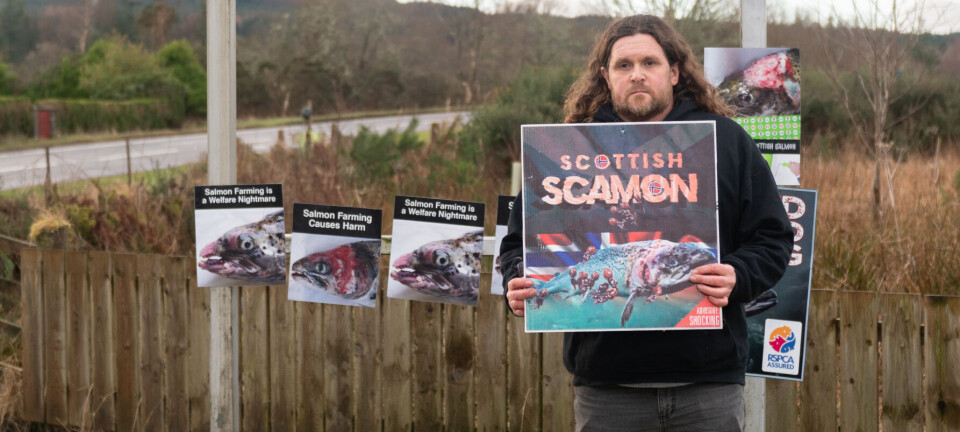
Salmon farmers fund wild fish 'gene bank'
Parr will be kept at Otter Ferry Seafish and used as broodstock to restock rivers
A groundbreaking live salmon “gene bank” is among seven major environmental projects being supported by grants of almost £140,000 from Scotland’s salmon farmers to help save wild salmon and sea trout.
The project aims to establish a gene bank incorporating both fish eggs and live fish kept as broodstock at Tighnabruaich-based Otter Ferry Seafish. The four-year project, developed in partnership with the Argyll Fisheries Trust and the River Ruel Improvement Association, involves genetic surveys, electrofishing monitoring, and overwintering autumn parr in Year 1 (2024).
Subsequent years focus on managing smoltification, PIT tagging, and evaluating stocking strategies with mature broodfish and fertilised eggs. The project will culminate in comprehensive surveys and genetic screenings by 2027.
Money for the project and several others (see panel) is coming from trade body Salmon Scotland’s wild fisheries fund, which aims to address long-term species decline.
£1.5m commitment
The fund is part of a £1.5 million commitment from Scotland’s salmon farmers to support the conservation, restoration, and sustainable management of wild fish numbers.
Otter Ferry Seafish has been awarded £49,404 for the project, which organisers hope will not only help stock several regional rivers but also pave the way for a wider “genetic insurance” network of banks across the country.
A separate scheme to tackle erosion on the Ruel, a nine-mile long river that runs into Loch Ruel, has received £10,000, marking a third year of funding. The work will improve the habitat through tree planting and fencing.
Decades of decline
Wild salmon and sea trout populations throughout the UK have been in decline for decades, with habitat loss and rising river and sea temperatures believed to be primary causes.
Wild Scottish Atlantic salmon now have a marine survival rate between 1% and 5%, compared to around 25% only three decades ago.
The Scottish Government has identified other pressures facing wild salmon, including non-native plants, predation by fish, birds and seals, and obstacles to fish passage including dams and weirs.
Sea lice that are said to spread from salmon farms have also been blamed for playing a part in the decline of wild salmon, although a Scottish Government funded study into sea lice spread from farms in Loch Linnhe, a loch with several fish farms, found just 19 lice larvae in 372 field samples gathered during extensive netting.
Salmon farming companies also operate exclusively on the west coast, Orkney, and Shetland, whereas wild salmon are declining throughout the UK. Nonetheless, salmon producers launched the fund to play their part in finding solutions, engaging constructively with the wild fish sector, and taking meaningful action to save wild salmon.
Constructive relationship
Previously called the ‘wild salmonid fund’, more than £335,000 has already been invested since 2021 including a £35,000 grant to save the leaking Fincastle Dam on West Harris, helping preserve an important salmon fishery.
The fund is co-ordinated by fishery manager Jon Gibb, who is based in Fort William and has championed a constructive relationship between the farm-raised salmon sector and fisheries and angling groups.
Salmon Scotland chief executive Tavish Scott said: “We actively contribute to reversing [wild salmon] decline by supporting community-led projects to restore our rivers and lochs, making a positive global impact. We have developed world-leading expertise in hatching and rearing salmon that thrive at sea. Our members not only fund projects but also share their expertise to help restock wild fisheries, contributing to reversing the decline in wild salmon numbers.”
Restocking rivers
Otter Ferry Seafish produces cleaner fish (wrasse and lumpfish) used by some salmon farmers as a natural way to remove sea lice from farm-raised salmon.
By setting up a live salmon gene bank, the project seeks to preserve the genetic material of threatened wild populations, ensuring their survival and adaptability.
Using advanced genetic screening, the team will assess the diversity of salmon in the River Ruel and determine the need for egg stocking from the gene bank.
The goal is to help restock several regional rivers and set a model for other areas to follow.
Expertise and facilities
Alastair Barge, managing director of Otter Ferry Seafish, said the project combines the knowledge and expertise of the wild fishery sector with the control provided by Otter Ferry’s staff and versatile aquaculture facilities.
“Working together with the Argyll Fisheries Trust and the River Ruel Improvement Association, we aim to preserve the genetic integrity of the river’s salmon population while giving it a real chance for rapid recovery in the future,” said Barge.
Andrew Barker, of the River Ruel Improvement Association, said: “We are extremely grateful to the Salmon Scotland wild fisheries fund for making possible a very exciting project to grow to maturity salmon parr taken from the river before releasing them back into the river to spawn.”












































































